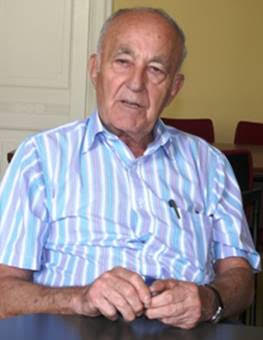
THE VOICE OF INTERNATIONAL LITHUANIA
|
VilNews has its own Google archive! Type a word in the above search box to find any article.
You can also follow us on Facebook. We have two different pages. Click to open and join.
|
Education research & development
- Posted by - (2) Comment
Future of Lithuanian education:
Innovation and creativity
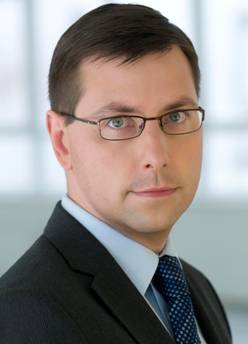
Minister of Education and Science
Gintaras Steponavičius
By: Minister of Education and Science, Gintaras Steponavičius
Starting the new school year, our focus of attention remains the same – fostering innovation and creativity.
More freedom to schools
Last year our schools started to work according to new curriculum programmes based on promoting practical use of knowledge and developing skills of independent learning. Our aim is to create an educational basis enabling kids not only to gain knowledge, but also to know, how to use it in practice. New programmes allow schools and teachers to choose the learning content, to decide what and how to teach.
Lithuanian schools possess high level of academic excellence and the credit goes to hardworking teachers and pupils. They continually win medals at international Olympiads. A graduate of a Kaunas gymnasium became the best young scientist of the European Union in 2011.
Electronic backpacks for fifth-graders
The Ministry of Education and Science plans to provide around 100 schools with tablet computers, they will be used by up to 10 thousand fifth-graders. Last year only, three educational websites were created for 5 to 8-graders where pupils can learn natural sciences and Lithuanian language by playing and conducting virtual experiments. In addition to virtual laboratories, classrooms of gymnasiums and secondary schools were supplied with new teaching resources for art and technology classes and state of the art laboratory equipment for natural sciences.
Almost 80 percent of the schools in Lithuania have exchanged the regular paper grade books for electronic ones. During the last 4 years, there was an explosion of electronic grade books. In this area we are leaders not only among the countries of our region, but also in Europe.
Electronic grade books not only lighten workload for teachers. They can be accessed online by parents and house school records, including grades, assignments, progress, attendance, schedules, as well as teacher notes.
Better access to after school activities
Unfortunately, as a result of demographic crisis, less kids come to school every year and we are faced with the necessity to close some smaller schools. At the same time, new educational opportunities arise. This year in rural areas 36 multifunctional community centers will open the doors, among other functions they can serve as pre-, primary or basic schools.
It is very important to make our classrooms vibrant, to give our kids access not only to interactive learning, but also to educational after school activities. Starting this October, 4 municipalities will test-drive non-formal education vouchers. We expect the new finance model to allow better access to after school activities, the percentage of children involved is expected to rise from 20 to 50 percent.
Professional development opportunities for teachers
Professional training and retraining for teachers is another area where investments are crucial. During next couple of years, over 8 thousand teachers will be able to participate in different training activities. Special attention is being paid to starting teachers.
Teachers today face a great challenge to help children, growing up under constant information, data and technology siege, not to loose natural keenness to be creative, to generate and implement new ideas, to keep individual outlook.
Communication Department
Ministry of Education and Science
www.smm.lt
info@smm.lt
- Bookmark :
- Digg
- del.icio.us
- Stumbleupon
- Redit it
- Posted by - (1) Comment
 |
FROM NOVEMBER 2006 THE STATE’S EDUCATION IN A BAD SHAPE |




- Bookmark :
- Digg
- del.icio.us
- Stumbleupon
- Redit it
- Posted by - (10) Comment
When Donna heard that her English teacher was going to give daily
quizzes on Harper Lee’s novel To Kill a Mockingbird, she panicked;
“I can’t take tests, my
mind just goes blank”

By: Dr. Boris Vytautas Bakunas, PhD
When Donna heard that her English teacher was going to give daily quizzes on Harper Lee’s novel To Kill a Mockingbird, she panicked. “I can’t take tests,” she blurted out. “My mind just goes blank.”
On test days, twelve-year-old Andrew could hear his heart pounding the moment he walked through the classroom door. As his muscles tensed and his stomach churned, he felt increasingly anxious and confused.
Worldwide, tens of millions of students at the elementary, secondary, and university levels suffer from debilitating test anxiety. In fact, researchers have discovered that the longer students stay in school, the more likely they are to become test anxious.
Educational psychologists Paul Eggen and Don Kauchak have defined test anxiety as “a relatively stable, unpleasant reaction to testing situations that lowers performance.” In many instances, test anxiety can become so severe that it leads to academic failure, loss of self-esteem, and missed educational and career opportunities.
Test anxiety is not just limited to students. Many highly-accomplished, successful adults also dread taking tests. When the editors of Esquire magazine invited some of New York’s leading cultural celebrities to a fancy Manhattan hotel to take the Scholastic Aptitude Tests as part of a feature article they were planning, only P. J. O’Rourke, at that time the editor of the satirical magazine the National Lampoon, agreed. How did some of the others respond?
David Halberstam, American Pulitzer Prize-winning journalist, author, and historian recoiled in horror. “That’s the cruelest idea I ever heard of since the Chinese water torture!”
Gail Sheehy, best-selling author of Passages and 15 other books, cried out, “Oh, Jesus! Oh God! I don’t think I can take this.”
The Two Faces of Test Anxiety
Psychologists now recognize two sides to test anxiety: emotionality and worry. Physically we experience emotionality in several ways, including muscular tension, rapid pulse, dry mouth, upset stomach, and even nausea.
As distressing as these physical symptoms feel, they are relatively benign when compared to the real culprit in test anxiety – worry.
When test anxious students – and adults – fill their minds with thoughts about the consequences of failure and the embarrassment it would cause, they have little attention space in their working memories to devote to problem-solving.
Working memory is that part of the mind that does verbal and nonverbal tasks such as reasoning and comprehension. It has often been likened to a computer screen because it is where conscious information-processing occurs. And just like the computer screen on your desk, it has a limited capacity. The average adult can hold about seven (plus or minus two) unrelated bits of information in mind at any one time. A second important limitation is that a person cannot perform two unrelated mental tasks simultaneously. Just try to say the words of a song you know by heart out loud while adding a pair of two-digit numbers like 37 plus 45, and you will see how reciting the lyrics blocks your ability to solve the addition problem.
When people suffering from test anxiety fill their minds with task-irrelevant cognitions like “What if I fail? I couldn’t bear it!” or “What makes me think that I’m smart enough to write a dissertation,” they overload their minds with distracting and useless information. To extend the computer analogy, it’s as if they fill their minds with malware, and their minds operate in a slow, sluggish fashion, or even appear to shut down completely.
Recognizing Test-Anxious Students
Sometimes test-anxious students are easy to spot. Consider the experience of Robert, a chemistry teacher at a suburban high school in the United States, who had been assigned the job of monitoring ACT testing for students aspiring to gain admission to college.
”An hour into the exam, one kid got sick to his stomach and ran to the bathroom to vomit. Several others complained of very bad headaches. One nearly fainted.”
Some of the signs of test anxiety are behavioral. Whenever Matthew took a test, he charged into it like a racehorse. When the rest of the class had barely finished writing their names on their papers, Matthew would be handing his in. Asked if he studied, he muttered, “Yeah, sort of.”
Cynthia was just the opposite. Give her a test, and you would have to pry it loose from her fingers. A close look at one of her math tests showed that she utterly failed to budget her time. The first few problems were done in great detail while the rest where skipped altogether.
Students like Matthew avoid study and test-taking situations, while those like Cynthia are immobilized with fear by them. Several studies of test-anxious students have shown that as a group, they lack study and test-taking skills. Because they display many of the behaviors of students who lack self-discipline, these test-anxious students are frequently overlooked. In addition, some teachers simply refuse to admit that test anxiety is a real phenomenon, insisting that it is no more than an excuse for laziness. Yet ask these teachers how they feel when their teaching is being evaluated by a school principal or department chair, and they readily admit to being extremely nervous.
What Teachers Can Do to Help
Before giving a test, make sure that your classroom is quiet, well-lit, and free of distractions. Post a sign on your classroom door saying “Testing in Progress” and directing visitors to return later.
Stock your classroom with extra pencils, pens, calculators, and other materials your students may need. Teach your students an orderly procedure to follow in obtaining these items.
Allow time to review the day before and immediately prior to a test. Quiz students on key terms, concepts, and applications. Give them a chance to leaf through their texts and ask you questions they think might be on the test. Also, provide pointers on how they can identify important content, e.g., italicized terms, chapter sub-headings, and tables and graphs.
Give practice tests. Uncertainty is a breeding ground for anxiety. Students who know what expect are much less likely to worry.
During tests, give clear and precise instructions. For example, if you require that students answer questions using complete sentences, tell them so explicitly and emphatically. Write a sample complete-sentence response on the board next to one that is incomplete, and highlight the difference.
Give untimed tests. In one study, test anxious fifth and sixth graders made three times the number of computations errors when asked to solve simple arithmetic problems than they did when time pressure was removed. If a few students are still working when the class period ends, allow them to finish at a later prearranged date.
Use different kinds of assessment and a variety of test formats. This will improve the accuracy of the semester grades you obtain from your students. It will also give them a wide range of test-taking experiences.
After tests, avoid social comparisons and public displays of grades. Use high-frequency errors to re-teach concepts, principles, or operations students have failed to master. Analyze common mistakes with the class and show how they can be corrected.
Interview students who have done poorly. Ask them how they prepared for the test and what they can do to improve their performance next time. Some schools offer free tutoring for students who need extra help.
Teach study and test-taking skills as formal lesson plans. You’ll be surprised at how many students, even at the university level, fail to engage such basic strategies as systematically reading directions or reading all potential responses on multiple choice tests before answering. Among other skills, I recommend teaching students how make and use flashcards to learn important terms, how to highlight key sentences that convey main ideas as well as summary paragraphs. Be sure to allow your students time to practice the study skills you have taught during class sessions so that you are there to verify that they actually study and can offer help when needed. Pairing students with a study partner and allowing them to quiz each other the day before a test will make studying more enjoyable and effective. Once students see from their own experience that studying improves their grades, you can gradually phase out the time you devote to studying in class.
Keep your eyes open for signs of test anxiety. If a student appears frustrated or extremely tense, approach and offer assistance. Many students want help, but are afraid to ask. Be on the lookout for such warning sighs as rushing through tests, dawdling over a single difficult question, and complaining of stomachache, headache, or dizziness before a test.
No matter what you do, there will still be students who need more assistance to manage test anxiety than you can give in a regular classroom. Refer such students to their counselors or school psychologists for help. Also, contact the parents and tell them that their children may be suffering from test anxiety. Ask if the students are bringing textbooks home to study and check if they have a quiet place to study without interruption. Also, caution parents to avoid placing too much pressure on their children.
In many parts of the world, students and teachers are under enormous pressure to raise test scores. Ironically, such pressure may actually lower the scores of anxiety-prone students. By learning more about test anxiety yourself, and by creating a classroom climate in which the need to achieve does not subvert your primary goals – helping your students learn the content you teach and develop a positive attitude toward learning – you will help them develop learning and coping skills that they will help them for the rest of their lives.
References:
Bakunas, B. (1993). Putting the lid on test anxiety. Learning, 22, 64-65.
Eggen, P. E. & Kauchak, D. (1977). Educational Psychology: Windows on Classrooms. Upper Saddle River, NJ: Prentice Hall.
Hill, K. T. (1984). Debilitating motivation and testing: A major educational problem – possible solutions and policy applications: In R. Ames & C Ames (Eds.) Research on Motivation in Education (pp. 245-274). New York: Academic Press.
Ottens, A.J. (1984). Coping With Academic Anxiety. New York: Wilson.
Spielberger, C.D. & Vagg, P.R. (1995). Test anxiety: Theory, Assessment, and Treatment. Bristol, PA: Taylor & Francis.
Williams, Janice E. (1996). “Gender-Related Worry and Emotionality Test Anxiety for High-Achieving Students.” Psychology in the Schools; v33 n2 p159-62.
Zeidner, M. (1998). Test anxiety: The State of the Art. New York: Plenum.
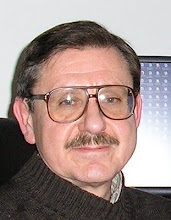 |
Dr, Boris Vytautas Bakunas is an educational psychologist and independent consultant specializing in individual and group performance improvement. His article “Helping Students Overcome Test Anxiety,” is based on a graduate, professional-development course he developed, which he teachers through St. Xavier University/International Renewal Institute. |
- Bookmark :
- Digg
- del.icio.us
- Stumbleupon
- Redit it
- Posted by - (0) Comment
Are you of Lithuanian descent, living abroad?
Tell us about your skills
in Lithuanian language
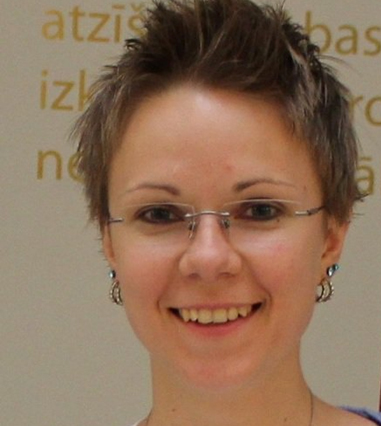
Darja Lyzenko
By Darja Lyzenko, SIC
darja.lyzenko@sic.lt
Together with Vilnius University our research company is currently carrying out a research study about the language skills and usage of Lithuanian descent people residing outside of Lithuania. We are looking for Lithuanians who (1) currently live somewhere other than Lithuania for more than 3 years, also (2) who left Lithuania either by themselves or with their parents, or (3) whose parents or grandparents left Lithuania before they were born, i.e. who were born outside of Lithuania.
The survey is conducted via internet all over the world. We would therefore appreciate any help in spreading the information about this study. In case you have your community forum/Facebook account or send newsletters to the community members - we have prepared a flyer (see below) with short text information about the survey in both - English and Lithuanian. We are also kindly inviting you personally to register and participate in the survey.
Darja Lyzenko
Tel: +370 5 2054 524 Fax: +370 5 2054 501
Greenhall, Upės g. 21, LT-08128 Vilnius
www.sic.lt
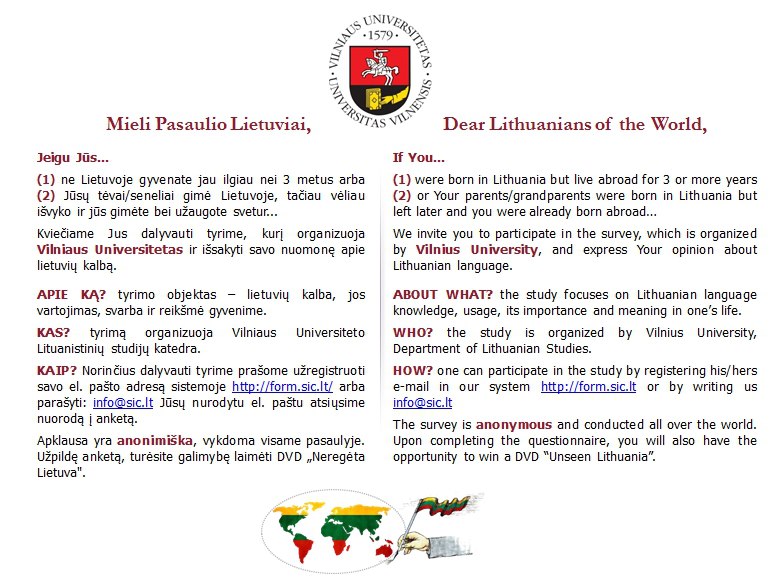
- Bookmark :
- Digg
- del.icio.us
- Stumbleupon
- Redit it
- Posted by - (2) Comment
Vilnius University during
“Soviet Times”
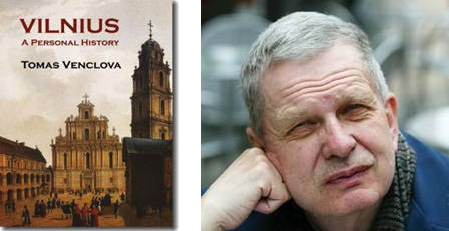
Excerpt from Tomas Venclova’s book “Vilnius a Personal History”.
I entered the University shortly after Stalin’s death. I was sixteen years old, one of the youngest students there. Times had somewhat improved―become more “vegetarian,” to quote Anna Akhmatova. The war against the anti-Communist Lithuanian and Polish partisans was coming to an end, most of them having been killed. The deportations had stopped, and people―though not all, by far―were coming back from Siberia and the prisons. Yet grim Soviet conditions still prevailed.
Polish professors from the prewar era had been ousted―“repatriated” was the official term―and there were scarcely any Lithuanian professors left. Some ended up in America, others in concentration camps or six feet under, and still others were simply not permitted to teach. In the best of cases, they were replaced by high school teachers (most of them very intimidated); in somewhat worse cases, by young careerists; and in the worst of all cases, by individuals who had sent dozens of people into slave labor. Among this third group were many recent arrivals from Russia, who were more successful than the locals in adapting to the system since they knew it better. Lithuanian continued to be the language of instruction. The local Communists thought this was to their great credit, but those in power probably weren’t especially interested in which language was used―what was more important to them was what was said. Marxism (oh, if only it had really been Marxism!) and military training took up almost all the students’ time. At least half of the university library could not be accessed without special permission, something that was practically impossible to get.
Only the University buildings resisted the new times. They were dilapidated and full of garbage. The sewer system didn’t work, and paint and plaster were crumbling off the walls―but the huge labyrinth of inner courtyards, perhaps the most important feature of the Old City, remained. You could wander through this labyrinth for hours. Students joked that there were places where no man had ever set foot. And indeed there were some courtyards we could only see through the auditorium windows; it was a total puzzle how one could gain access to them. All the courtyards had been renamed, since the pre-war names recalled professors of the Jesuit era who, to say the least, seemed suspect to the Soviet authorities. (The Lithuanian nationalists didn’t like the Jesuits much either: although they may not have been Poles, they were cosmopolites.) But sooner or later, the old names turned up again, almost of their own accord. The most archaic courtyard and the one I knew best had a dry fountain with the trunk of a birch tree hanging over it. The southern wing of the courtyard, which had hardly changed since the days of the founding of the University, was supported by massive Gothic pillars. Other, more slender columns decorated an adjoining building; they lent the courtyard color, even cheerfulness, for the upper part was entirely clad in red brick. It was called the Courtyard of Philology, but we all knew that its real patron saint was Sarbievius, the seventeenth-century poet.
Poczobutt Courtyard, on the other hand, dated from a later era. It had an aura of mystery, its arcades usually fading into the dusky light. But the filigree pattern of shadows cast by bare tree branches fell on rough, sun-bathed, cylindrical little towers decorated with bas-reliefs of the signs of the zodiac. On the wall between the towers it was possible to make out Latin inscriptions. I memorized one of them, the hexameter verse, Addidit antiquo nova lumina coelo. Telescopes from the eighteenth century were preserved in the towers’ round rooms. This is where the Jesuit Martin Poczobutt built his observatory, and through these telescopes he observed Mercury, the comets, and the first asteroids. Once, according to his contemporaries, when he was trying to establish the precise orbit of the newly-discovered planet Uranus, he was so exhausted after several sleepless nights that he suffered a hemorrhage and thought he would die. He created a new constellation on the cosmological charts called “Poniatowski’s Bull” (Taurus Poniatovii) in honor of the last Polish-Lithuanian King. Poczobutt proudly carved it into the bas-relief among the other signs of the zodiac. From this courtyard, it is possible to go through a low archway and arrive at the largest and most beautiful courtyard, named in honor of Piotr Skarga, the University’s first rector. In contrast to Poczobutt Courtyard, which calls to mind a semi-dark, idyllic room, the Skarga Courtyard opens up like a wide Italian plaza surrounded on three sides by ochre elliptical arches, and bordered on the fourth by a remarkable façade shaped like an organ, with a massive, square bell tower rising to the right. It looks very southern, even when I’ve seen it during a blizzard. Some compare the plaza to San Marco in Venice.
The façade next to the bell tower is perhaps the consummate work of the architect Johann Christoph Glaubitz. Glaubitz blended it with the very large, old Gothic Church of St. John’s, built by Jogaila. The first school in Vilnius―and in all of Lithuania―was affiliated with it. The University was also established on this spot, which is so rich in tradition. Glaubitz’s façade is late Baroque and truly monumental, yet it seems to vanish into the air. Its colonade consists exclusively of arches and curves; groups of columns tied together by niches, volutes, curved cornices, and metal ornamentation spread out like a web. Silhouetted against the sky with curving, non-Euclidian arcs, the multi-story building becomes smaller toward the top, and its reliefs lighter. Neither solidity nor substantiality remains: architecture renounces itself here and enters the spheres of music and poetry. The kaleidoscopic composition of the ten altars inside the church is in the same style. Originally, there were twenty-two altars, but the most were destroyed in the first half of the nineteenth century; the sculptures and statues were reduced to rubble and carried off in three thousand wagons.
A second misfortune overtook the church after the Second World War. As a student, I couldn’t imagine―even in my wildest dreams―that I would be permitted to enter into the same space where theological issues had once been debated, and where later Mickiewicz and Daukantas attended Mass. With its windows smashed, its interior deserted, the church had been turned into a storeroom for paper―not for vodka, as was the case with St. Casimir’s. Later, the paper probably disappeared too. There was a rumor that some Soviet film outfit was using the church to make a war film, and several dozen live artillery shells were fired off inside the church. It wasn’t until the University’s anniversary that money was found for renovations. The church has only recently once again served as a place of worship.
It was these buildings that kept us from forgetting the very idea of civilization. I am describing only what first strikes one in the Latin quarter of Vilnius. There were countless other mysterious, remote corners: little interior courtyards with upper storeys and pilasters; statues atop old stairways; illegible inscriptions on cracked bas relief, where above windows one could make out medieval symbols. There were chambers preserved from the time of the Jesuits; on one ceiling there was a peaceful Madonna next to portraits of Democritus and Epicurus; Copernicus’s book De revolutionibus orbium coelestium was resplendently displayed in a vitrine―a copy that had allegedly been presented to the author on his deathbed. The ceiling arches of the auditoriums, the clumsy wooden benches on which generations of students left their marks with pens or pocket knives, were much more human than the lectures about the history of the Communist Party or seminars dealing with the history of Soviet literature.
- Bookmark :
- Digg
- del.icio.us
- Stumbleupon
- Redit it
- Posted by - (0) Comment
News from Baltic
educational institutions

Baltic Management Development Association (BMDA) offers all Baltic Institutions to present news in their monthly newsletter. The newsletter includes information about international BMDA network news and events that is placed in interactive BMDA IT portal www.bmda.net
If you would like to have news about you and your institution in BMDA Newsletter, all you have to do, is place the news in BMDA IT portal.
- Bookmark :
- Digg
- del.icio.us
- Stumbleupon
- Redit it
- Posted by - (3) Comment
Chinese-Lithuanian
IT Innovation Centre a
step in right direction!
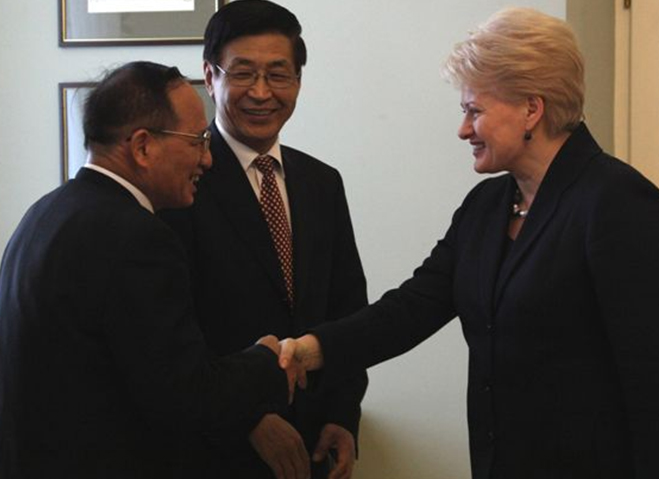
President Dalia Grybauskaitė with Vice Presidents Qu Wenchu and Lu Yong of the Chinese IT giant "Huawei" - to discuss cooperation and investments in the sphere of innovations. The President said the cooperation with "Huawei", is already yielding mutually beneficial results. Vilnius University, "Omnitel" and "Huawei" this week opened an information technologies research laboratory which they believe will become a centre of innovations for the Baltic countries and Eastern Europe.
Text: Aage Myhre, Editor-in-Chief
aage.myhre@VilNews.com
There has been expressed skepticism about some of the so-called foreign investments (FDIs) that have taken place in this country over the past two-three years, as they largely have been paid by Lithuania itself, meaning the country's tax payers, partly as a hollow play to the gallery with the intention of putting the government's results in this field in better light.
This week's announced partnership with China appears different. More pragmatic, real and sustainable. I consider the new Chinese-Lithuanian IT Innovation Centre at Vilnius University a step in the right direction!
Lithuania should create more 'basketball business'
The cooperation with China started when Lithuania’s “Omnitel”, the leading Baltic telecommunication company, owned by Scandinavian TeliaSonera, invited Chinese “Huawei”, a leading global information and communications technology (ICT) solutions provider, to a cooperation with the aim to extend Omnitel’s network ahead of the European basketball championship (EuroBasket.2011) that took place in Lithuania earlier this autumn. The cooperation led to the successful deployment of a commercial 1800MHz LTE network for Omnitel to serve the championship.
Omnitel had long been planning an upgrade to its existing network in order to meet increasing data demands, and in May of this year, Huawei was exclusively awarded the Omnitel contract for LTE deployment and GSM/UMTS radio access networks expansion across all of Lithuania.
At EuroBasket 2011, Huawei provided Omnitel with its world-leading Single RAN LTE solution as well as with radio access and transmission networks. As a result, the LTE network was able to achieve downlink speeds of 85Mb/s, making it the fastest mobile broadband network in Lithuania.
The excellent performance of the LTE network during EuroBasket 2011 was an important step in the commercialization process of the Baltic region’s mobile broadband network.
Basketball is known as Lithuania's second religion (after Catholicism). The collaboration between Omnitel and Huawei shows that it also can lead to business and development cooperation. This week's IT Innovation Centre is a tangible proof of that. So why not think more in this direction? There is probably much more of business and FDIs that can be created around the national sport…
The President plays well with business and science!
"Lithuania is among the leading players in the European IT and telecom market. We have not only the most advanced infrastructure but also highly qualified professionals. "Huawei" is one of the most innovative companies in the world. Cooperation with this company will serve to promote more rapid development of innovations as it will open new possibilities in the global IT market," President Dalia Grybauskaitė said at a meeting with the Chinese delegation in Vilnius this week.
The President during her visit to China in October last year participated in the Shanghai World EXPO and agreed with representatives of "Huawei" to organize the training course for Lithuanian students in this company and to establish an information technologies research centre in Lithuania.
In July, ten IT students from Kaunas University of Technology, Vilnius Gediminas Technical University and Vytautas Magnus University underwent a training course in the Chinese company. This week Vilnius University, "Omnitel" and "Huawei" opened in Vilnius a research centre of information technologies the activities of which will include the implementation of research programmes, traineeships for researchers, and the development of modern technologies.
Dalia Grybauskaitė also stressed the importance of economic cooperation between Lithuania and China. The shuttle train "Saulė", which was launched last month, connecting China, Kazakhstan and Lithuania, should enhance the bilateral business relations even more, she said.
The President plays truly well with the business and the scientists in this case. That bodes well for a better and more advanced ‘Lithuania of the future’!

In May this year an initial agreement for the establishing of a joint research laboratory at Vilnius University was signed between (L/R) Antanas Zabulis, President of „Omnitel“, Professor Benediktas Juodka, Rector of Vilnius University and Ye Yong, Country Manager for the Baltics of „Huawei Technologies Co”.
- Bookmark :
- Digg
- del.icio.us
- Stumbleupon
- Redit it
Vilnius University during “Soviet Times”
- Posted by - (0) Comment
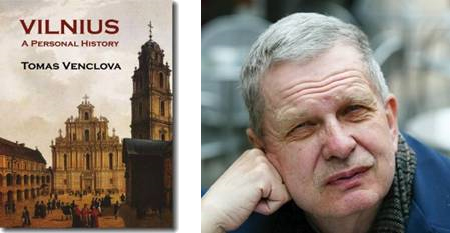
Excerpt from Tomas Venclova’s book “Vilnius a Personal History”.
I entered the University shortly after Stalin’s death. I was sixteen years old, one of the youngest students there. Times had somewhat improved―become more “vegetarian,” to quote Anna Akhmatova. The war against the anti-Communist Lithuanian and Polish partisans was coming to an end, most of them having been killed. The deportations had stopped, and people―though not all, by far―were coming back from Siberia and the prisons. Yet grim Soviet conditions still prevailed. Polish professors from the prewar era had been ousted―“repatriated” was the official term―and there were scarcely any Lithuanian professors left. Some ended up in America, others in concentration camps or six feet under, and still others were simply not permitted to teach. In the best of cases, they were replaced by high school teachers (most of them very intimidated); in somewhat worse cases, by young careerists; and in the worst of all cases, by individuals who had sent dozens of people into slave labor. Among this third group were many recent arrivals from Russia, who were more successful than the locals in adapting to the system since they knew it better. Lithuanian continued to be the language of instruction. The local Communists thought this was to their great credit, but those in power probably weren’t especially interested in which language was used―what was more important to them was what was said. Marxism (oh, if only it had really been Marxism!) and military training took up almost all the students’ time. At least half of the university library could not be accessed without special permission, something that was practically impossible to get.
Only the University buildings resisted the new times. They were dilapidated and full of garbage. The sewer system didn’t work, and paint and plaster were crumbling off the walls―but the huge labyrinth of inner courtyards, perhaps the most important feature of the Old City, remained. You could wander through this labyrinth for hours. Students joked that there were places where no man had ever set foot. And indeed there were some courtyards we could only see through the auditorium windows; it was a total puzzle how one could gain access to them. All the courtyards had been renamed, since the pre-war names recalled professors of the Jesuit era who, to say the least, seemed suspect to the Soviet authorities. (The Lithuanian nationalists didn’t like the Jesuits much either: although they may not have been Poles, they were cosmopolites.) But sooner or later, the old names turned up again, almost of their own accord. The most archaic courtyard and the one I knew best had a dry fountain with the trunk of a birch tree hanging over it. The southern wing of the courtyard, which had hardly changed since the days of the founding of the University, was supported by massive Gothic pillars. Other, more slender columns decorated an adjoining building; they lent the courtyard color, even cheerfulness, for the upper part was entirely clad in red brick. It was called the Courtyard of Philology, but we all knew that its real patron saint was Sarbievius, the seventeenth-century poet.
Poczobutt Courtyard, on the other hand, dated from a later era. It had an aura of mystery, its arcades usually fading into the dusky light. But the filigree pattern of shadows cast by bare tree branches fell on rough, sun-bathed, cylindrical little towers decorated with bas-reliefs of the signs of the zodiac. On the wall between the towers it was possible to make out Latin inscriptions. I memorized one of them, the hexameter verse, Addidit antiquo nova lumina coelo. Telescopes from the eighteenth century were preserved in the towers’ round rooms. This is where the Jesuit Martin Poczobutt built his observatory, and through these telescopes he observed Mercury, the comets, and the first asteroids. Once, according to his contemporaries, when he was trying to establish the precise orbit of the newly-discovered planet Uranus, he was so exhausted after several sleepless nights that he suffered a hemorrhage and thought he would die. He created a new constellation on the cosmological charts called “Poniatowski’s Bull” (Taurus Poniatovii) in honor of the last Polish-Lithuanian King. Poczobutt proudly carved it into the bas-relief among the other signs of the zodiac. From this courtyard, it is possible to go through a low archway and arrive at the largest and most beautiful courtyard, named in honor of Piotr Skarga, the University’s first rector. In contrast to Poczobutt Courtyard, which calls to mind a semi-dark, idyllic room, the Skarga Courtyard opens up like a wide Italian plaza surrounded on three sides by ochre elliptical arches, and bordered on the fourth by a remarkable façade shaped like an organ, with a massive, square bell tower rising to the right. It looks very southern, even when I’ve seen it during a blizzard. Some compare the plaza to San Marco in Venice.
The façade next to the bell tower is perhaps the consummate work of the architect Johann Christoph Glaubitz. Glaubitz blended it with the very large, old Gothic Church of St. John’s, built by Jogaila. The first school in Vilnius―and in all of Lithuania―was affiliated with it. The University was also established on this spot, which is so rich in tradition. Glaubitz’s façade is late Baroque and truly monumental, yet it seems to vanish into the air. Its colonade consists exclusively of arches and curves; groups of columns tied together by niches, volutes, curved cornices, and metal ornamentation spread out like a web. Silhouetted against the sky with curving, non-Euclidian arcs, the multi-story building becomes smaller toward the top, and its reliefs lighter. Neither solidity nor substantiality remains: architecture renounces itself here and enters the spheres of music and poetry. The kaleidoscopic composition of the ten altars inside the church is in the same style. Originally, there were twenty-two altars, but the most were destroyed in the first half of the nineteenth century; the sculptures and statues were reduced to rubble and carried off in three thousand wagons.
A second misfortune overtook the church after the Second World War. As a student, I couldn’t imagine―even in my wildest dreams―that I would be permitted to enter into the same space where theological issues had once been debated, and where later Mickiewicz and Daukantas attended Mass. With its windows smashed, its interior deserted, the church had been turned into a storeroom for paper―not for vodka, as was the case with St. Casimir’s. Later, the paper probably disappeared too. There was a rumor that some Soviet film outfit was using the church to make a war film, and several dozen live artillery shells were fired off inside the church. It wasn’t until the University’s anniversary that money was found for renovations. The church has only recently once again served as a place of worship.
It was these buildings that kept us from forgetting the very idea of civilization. I am describing only what first strikes one in the Latin quarter of Vilnius. There were countless other mysterious, remote corners: little interior courtyards with upper storeys and pilasters; statues atop old stairways; illegible inscriptions on cracked bas relief, where above windows one could make out medieval symbols. There were chambers preserved from the time of the Jesuits; on one ceiling there was a peaceful Madonna next to portraits of Democritus and Epicurus; Copernicus’s book De revolutionibus orbium coelestium was resplendently displayed in a vitrine―a copy that had allegedly been presented to the author on his deathbed. The ceiling arches of the auditoriums, the clumsy wooden benches on which generations of students left their marks with pens or pocket knives, were much more human than the lectures about the history of the Communist Party or seminars dealing with the history of Soviet literature.
- Bookmark :
- Digg
- del.icio.us
- Stumbleupon
- Redit it
Vilnius University since 1579
- Posted by - (1) Comment
Since its establishment in the 16th century, Vilnius University, as integral part of European science and culture has embodied the concept of a classical university and the unity of studies and research.
Vilnius University is an active participant in international scientific and academic activities and boasts many prominent scientists, professors and graduates. Scientific development and the expanding relations with global research centres have contributed to the variety of research and studies at Vilnius University.
We invite you for a walk around the University.
| 1. Grand Courtyard
2. Observatory Courtyard 3. Library Courtyard 4. M. K. Sarbievijus Courtyard 5. M. Daukša Courtyard 6. S. Daukantas Courtyard 7. Arcade Courtyard 8. L. Gucevičius Courtyard 9. A. Mickevičius Courtyard |
10. S. Stanevičius Courtyard
11. K. Sirvydas Courtyard 12. Printing House Courtyard 13. Bursų (Hostel) Courtyard A. Astronomical Observatory B. St. Jonh’s Church C. Library D. Faculty of Philology E. Faculty of History |
F. University bookshop “Littera”
G. Centre of Orientalistics H. Faculty of Philosophy R. Rector’s Office S. Reading Room I. Aula Rectoris – Rector’s hall II. Aula Parva – the Small hall III. P. Smuglevičius hall IV. The Theatre hall |
- Bookmark :
- Digg
- del.icio.us
- Stumbleupon
- Redit it
- Posted by - (1) Comment
“I’d like 6 kilograms of
innovation, please”
Ojasaar Yrjö, representative of Solon partners Ltd., Estonia,
at this year’s Baltic Dynamics Conference.
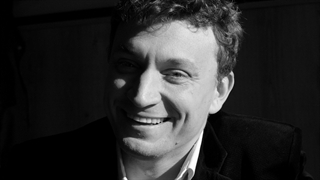
Ojasaar Yrjö
Text: Evelina Kutkaitytė
Last month the annual Baltic Dynamics conference invited innovation supporters from around the Baltic Sea to Tallinn, Estonia.
Estonia’s president, Toomas Hendrik Ilves, opened the conference emphasising the importance of Baltic cooperation. “The Baltic States make huge impact to EU economy as well as help withstanding the business competition with the bigs like China”, said the Estonian president, who also is the initiator of EU’s Baltic Sea strategy.
According to the president, the findings of Baltic Dynamics conference should be presented to the Baltic governments. The bureaucracy level in Estonia makes it almost 3 years to get business support from the state thus the companies prefer working on their own. Similar conditions are observed in Latvia and Lithuania.
Despite all independent efforts to survive in the market, today‘s businesses show lack of knowledge and creativity. Why Apple was so successful? Because it combined technology and design. In our universities technology, design and arts are still taught separately. If we observe and compare people involved in innovation support and creative industries, we will notice their language and understanding of environment are quite different. The first ones talk about clusters and valleys, and the others – about garages and camps.
At the conference, six creative Baltic incubators were presented.
Tallinn creative incubator is one of three incubators of in Estonia, with 47% of the country’s creative enterprises as participants. Standing out for its orientation to business rather than to traditional industries, the Tallinn creative incubator was awarded as the second best creative incubator in the world last year.
Riga creative industry incubator is the only creative incubator in Latvia, established in 2010. The aim of the incubator is to be a one-stop-shop providing all creative services in one place. Riga creative industry incubator is responsible for distributing 2 million Euros for start-up companies and providing business support for at least 100 companies in 5 years.
The role of creative business incubators in the regeneration of city regions was presented with a quote of the famous sculptor Constantin Brancusi – “to see far is one thing, to go there – another”.
Liverpool stopped being sorry for itself
Basecap3TM is an award-winning business community in Liverpool (UK) supporting creative industries. It provides a modern environment where new start-ups and early stage development companies can access quality business support, engage with likeminded entrepreneurs and improve their chances of starting and maintaining a business. “The incubator made the city alive and Liverpool stopped being sorry for itself” claimed the presenter Roy Jones. “Creative industries are full of SMEs which are the key of all economies” – added R. Jones reasoning why helping creative SMEs is necessary for the economy.
2800% growth
Arabus business incubator at Aalto start-up centre (Finland) aims at promoting entrepreneurship in the field of creative sector and industries. Their success stories include companies demonstrating growth of 2800% like Footbalance and Futurice as well as Microsoft award winners GWEB and Sopima.
In the USA an average 11% of industries grow on venture capital, 25% of GDP and 80% of jobs are created by companies with venture capital investments. When Angry Birds, a video game developed by a Finish company, got so successful, many more investors came to Finland to check whether there was something more happening.
The problem is you cannot order innovation and success in advance
“I’d like 6 kilograms of innovation, please” – laughs Ojasaar Yrjö, representative of Solon partners Ltd. In Estonia. On the way to innovations there is always a valley of death – a period of time when companies and business starters need support and few are interested in investing. In many countries state comes to help at this stage of business development. Springboard in Finland offers 9 thousand Euros per investor you succeed to attract with your idea. Estonian development fund runs a virtual incubator Seedbooster, and Baltic Innovation Agency offers trainings to entrepreneurs on how to present your idea to a potential investor.
A venture garage
Aalto University (Finland) is running the Aalto Centre for Entrepreneurship WITH the aim of “creating engines” for new and existing companies. Collaborating with Stanford University (USA) and other partners they recently opened a Venture Garage – a co-working space for Baltic and Nordic entrepreneurs. With annual budget of 400 million Euros Aalto University employs 15 people to work with young entrepreneurs, 9 of which are exclusively involved in technology transfer. In 2010/11 there were fifteen companies established on the basis of Aalto originating ideas. Aalto University believes that entrepreneurs should be seen as heroes thus awareness building is one of the main tasks within entrepreneurship programs.
Business leading innovations are never concrete in the beginning. The good news is that there are milestones indicating if it’s worth investing more. Technology transfer process in Aalto University involves evaluation of ideas looking for anything “sunny” that might work rather than anything “cloudy” proving the idea will fail. The bright sides of ideas are sought either in business potential, feasibility to manufacture or intellectual property rights.
University roles
Professor Pasi Malinen (Finland) demonstrated his models for developing 3rd generation universities. He, like most of the speakers, marked the need of change in management and communication. “Nowadays universities try to become more innovative by creating special departments, leaving everybody else to do their old, regular work. But everyone should be involved,” said the professor.
The urge for collaboration was also expressed among Swedish start-ups. In one case, a student’s initiative resulted in the establishing of a business incubator which later evolved into a local science park:
“Young entrepreneurs at that time didn’t ask for an incubator – they simply wanted an environment for collaboration, and today Jönköping Science Park (Sweden) is offering a unique meeting place for entrepreneurs. The physical environment has no walls. Combining ideas is what makes them happen”, said managing director Therese Sjölundh. Differently from other similar institutions Jönköping Science Park has both pre-incubation and post-incubation programmes. Also, this science park focuses on business excellence rather than technology excellence. 14 employees are working mainly as business developers, evaluating about 300 business ideas per year, helping 100 of them to start, and hosting 15 companies in business incubator. Sjölundh noted that no linear development will ever lead companies to success. Thus the aim of business incubators and science parks is to help companies finding their own business model for growth.
Lithuania is losing to Estonia
According to the competitiveness index, Lithuania is in the middle of the three Baltic States, losing its former leading position to Estonia. KTU Regional Science Park (Lithuania) shared statistics proving financial benefits of innovation and business support for the State. In Lithuania there were nearly 60 Million EUR invested into infrastructure of incubators and science parks so far meanwhile companies that grow with their help pay over 6 Million EUR taxes each year.
The next Baltic Dynamics conference will take place in Lithuania, 13 – 15 of September, 2012. We kindly invite to you to join the next event of sharing ideas and best practices on business support in the Baltic’s.
- Bookmark :
- Digg
- del.icio.us
- Stumbleupon
- Redit it
- Posted by - (1) Comment
The biggest sin a manager
can commit is doing nothing
SEMINAR:
Enterprise management in unstable economy:
What is important for you as a manager to know?
Hotel Villon le Meridien, 29 September, 9 a.m. – 5 p.m.
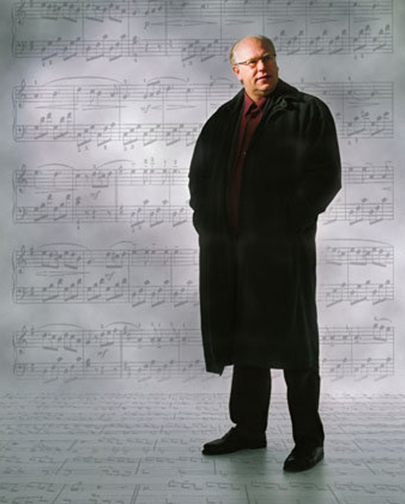
By Ulf Hallan, President of European Leadership Institute
If you are going to participate in one seminar this autumn, let it be this one. Not for yourself, but for the future of your company!
The dark clouds are arising again over the World Economy. Uncertainty and fear of the future do not only scare the World Leaders. They are trying to act now to save us from a new recession.
This situation does not only call for action from politicians. You, as a manager have a responsibility to make the right decisions now for your company.
But what are the right decisions? Should we cut costs or invest? Should we downsize or expand? What are the most necessary actions to be taken by you as a manager in the current situation?
Some say that the biggest sin a manager can commit is doing nothing. Your actions today have their consequences a year from now. And maybe in two and three years.
This is not going to be a listening seminar. You must be prepared to take part in the group and plenary discussions. Sharing your thoughts and actions. As we do have some non-Lithuanian speakers (their introductions will be translated), we will also have one or two English speaking working groups. Please check if you wish to take part in one of these and brush up your English. All other groups will work in Lithuanian language.
This seminar is intended for managers who have the responsibility of their company’s future. Weather you run a production company, an IT or Telecom company, a hotel or a service provider, this seminar will help you address the two most important questions:
· What is happening out there?
· What should I do in this situation?
European Leadership Institute invites you to the interactive seminar
Enterprise management in unstable economy:
What is important for You as a manager to know?
Location and place
Hotel Villon le Meridien, September 29, 9 a.m. – 5 p.m.
Price 320 LTL +PVM
SPEAKERS

How much risk can You take in today’s unstable economy? What should You be aware of? How can You make early forecast of the trends and be ahead of Your competitors? How can You make better informed decisions? What is the best strategy in Your sector now?
Case studies from Lithuanian companies. How have Lithuanian companies dealt with the economic crisis and recession? What were successful and doomed strategies? What is the current situation in the share market and what can You expect tomorrow?
How to design a good business strategy? Most of good strategies on paper fail, how to implement it well? How to integrate quality, personnel and performance management? How do You stimulate collaboration instead of competition between departments? How do You ensure flexibility and fast decision making, what is vital for business now?
The connections between local and global economy, linkage between share market and real economy, the long-term perspectives for Lithuanian economy. What can you expect in your sector? What should you take into account?
COME, DISCUSS, REFLECT AND FIND THE ANSWERS!
Program
9.00-9.15 Presentation of ELIN (Ulf Hallan, ELIN)
9.15-9.30 Introduction (Loreta Vaičaitytė, ELIN)
9.30-10.30 Risk management: recommendations by Fredrik Borch, DnB NORD
10.30-10.45 Coffee break
10.45-11.45 Lessons and examples from the economic crisis: analysis by Tadas Povilauskas, Finasta
11.45-12.15 Group discussion (Loreta Vaičaitytė, ELIN)
12.15-13.15 Lunch break
13.15-14.15 Integration of internal processes (Loreta Vaičaitytė, ELIN)
14.15-14.45 Individual reflection: structured analysis of your enterprise (Loreta Vaičaitytė, ELIN)
14.45-15.00 Coffee break
15.00-16.00 Long-term Lithuanian business perspectives (Rimantas Rudzkis, DnB NORD)
16.00-16.45 New opportunities and innovative business solutions (Rimantas Rudzkis, DnB NORD, Torben Pedersen, Deloitte & Loreta Vaičaitytė, ELIN)
16.45-17.00 Discussion and conclusions (Loreta Vaičaitytė, ELIN)
The seminar language will be Lithuanian. However, we hope to have one English work group.
If you would like to register, please call 861292665 or write to us info@elin.lt
- Bookmark :
- Digg
- del.icio.us
- Stumbleupon
- Redit it
- Posted by - (3) Comment
|
|
Professor David Passig at the ’World Lithuanian Economic Forum (WLEF)’: The dawning of a new civilization
|
“Brain power – knowledge, skills, and human personality quirks – will combine with computer power in order to think, reason, communicate, and create in ways we can scarcely even contemplate today.”
See Professor Passig’s WLEF slideshow here: http://www.passig.com/vault/presentations/TechSingularityEng_Short.pdf

The futurist Ray Kurzweil is one of those Professor Passig refers to when explaining the theory of ‘Singularity’.
In his presentation at the World Lithuanian Economic Forum, Professor Passig also referred to the futurist Ray Kurzweil, who defines the concept of ‘Singularity’ in terms of the technological creation of superintelligence, arguing that it is difficult or impossible for present-day humans to predict what a post-singularity world would be like, due to the difficulty of imagining the intentions and capabilities of superintelligent entities.
Kurzweil believes that we're approaching a moment when computers will become intelligent, and not just intelligent but more intelligent than humans. When that happens, humanity — our bodies, our minds, our civilization — will be completely and irreversibly transformed. He believes that this moment is not only inevitable but imminent.
According to his calculations, the end of human civilization as we know it will take place around year 2045.
The Singularity is an era in which our intelligence will become increasingly nonbiological and trillions of times more powerful than it is today—the dawning of a new civilization that will enable us to transcend our biological limitations and amplify our creativity.
|
Technological singularity refers to the hypothetical future emergence of greater-than human intelligence. Since the capabilities of such an intelligence would be difficult for an unaided human mind to comprehend, the occurrence of technological singularity is seen as an intellectual event horizon, beyond which the future becomes difficult to understand or predict. Nevertheless, proponents of the singularity typically anticipate such an event to precede an "intelligence explosion", wherein superintelligences design successive generations of increasingly powerful minds. The term was coined by science fiction writer Vernor Vinge, who argues that artificial intelligence, human biological enhancement or brain-computer interfaces could be possible causes for the singularity. The concept is popularized by futurists like Ray Kurzweil and widely expected by proponents to occur in the early to mid twenty first century. |
- Bookmark :
- Digg
- del.icio.us
- Stumbleupon
- Redit it
- Posted by - (0) Comment
The first ever Adizes Convention in Vilnius,
30 June – 2 July
|
|
|
You are cordially invited to the 33rd Annual Adizes International Convention which will take place in the Hotel Le Meridien in Vilnius 30 June – 2 July. The convention is a good opportunity for all of the different individuals and organizations that have applied and benefited from the Adizes methodology to come together. The convention will explore the latest advancements in the theories, practices and applications of the Adizes methodology.
The conference will commence at 6:30pm on June 30th with the convention’s opening dinner. On July 1st, Gintaras Steponavičius, Minister of Education and Science of Lithuania will open the convention with a welcome address.
Other programme highlights will include the founder’s session. Ichak Adizes, Founder of the Adizes Institute and the Adizes Methodology will present the latest illuminations from his personal and professional journey over the past 12 months. Additional speakers will include Adizes Associates, students at the Adizes Graduate School, Adizes clients, and other individuals who have applied the Adizes methodology in their various disciplines.
The Adizes Annual Convention will for the first time take place in Lithuania.
More information about the event you can find at the following link: http://convention.adizes.com
- Bookmark :
- Digg
- del.icio.us
- Stumbleupon
- Redit it
Tolerance education in Lithuanian schools
- Posted by - (1) Comment

By Arturas Bakanauskas
This became important a few years ago after the deaths of a number of girls, many in Poland, after teasing, or worse. The problem had not existed under the Soviet regime, or had been considerably smaller. But then the environment had also been considerably different: cartoons taught moral values, the authorities were charged with creating a single state (and so did not tolerate nationalism or anything that might be seen as promoting fragmentation), in the absence of money, friendship was the coin of the day, etc.
But after the deaths of these girls, measures started to be taken to avoid such deaths in Lithuania. One of these is a springtime voluntary intolerance-education week, which seems to focus on the thought that being called names does not feel very good. But this stimulus has apparently also been a curse, since I have seen a reaction only to those actions which caused the deaths, and not to intolerance as a whole.
The events below did occur and I do have witnesses to them. But the names have been eliminated as far as possible because removing a few people from the system is not likely to change anything as whole as the problem is bigger than just a few people or just one school. Naming names would just ruin the lives of the people involved, not fix the problem.
A certain amount of teasing always occurs at school and so long as it stays within certain limits, is perhaps even helpful as it teaches children how to handle stress. The job of the teaching staff is to see that it does not exceed those limits and start eroding the self-confidence of the victims or create the impression that such behaviour should be considered the norm.
The pupil in this case was a girl, who started coming home with stories of being harassed by the girls and the boys. The girls would go into the WC and comment on those using the toilet because there were no stall doors to provide privacy. When a girl is menstruating, this is particularly embarrassing and so the girl stopped using the toilet at school all together. Of course, there was another reason, namely that like most schools in Lithuania, there are no seats on the toilet bowls. You are expected to squat over the toilet in some fashion in order to use it. Not using the facilities for hours at a time has resulted in some health issues, like her drinking too little water in general.
The harassment from the boys was not just verbal, but also physical. For example, the girls were not allowed by the boys to participate in certain games during physical education because they could not throw the ball well enough. Physical violence and the threat of it were used to enforce the rule. The teacher did nothing to correct the situation.
Another time, the girl came home complaining that the boys were taking everything off her desk and tossing it around the room, breaking some of it. When she complained to the homeroom teacher (since this had occurred between classes and the classroom teacher had not taken responsibility), at first the pupil was told that the homeroom teacher would take care of it, then that the pupil should take better care of her stuff. Curious as to the reason for the change, the parents started asking the daughter what her role in all of this had been. At that point, it became clear that the boys had first tossed other pupil’s possessions to her and she had tossed them back to the perpetrators, not to the victims. In other words, she had been part of the problem until hoist on her own petard. Nevertheless, the reaction of the homeroom teacher in refusing to correct the situation at all just because one of the perpetrators had become a victim was wrong.
Finally one boy started using sexual terminology with the girl and only with her. When she complained to the homeroom teacher, the answer was that boys will be boys. The parents complained over the phone to the homeroom teacher with no results. After speaking to the headmaster over the phone about the situation, the boy started using a nonsense word with a similar sound when the teachers were around, but the original word when they were not. For English speakers, such a logical step is normal since there are so many euphemisms in English. There are none that I know of in Lithuanian, even for Russian expletives. So it raises a question of where the boy got the idea to circumvent the correction by using a euphemism. A couple of weeks had passed by now and the parents were becoming rather concerned since there seemed to be no recourse within the school itself. So an official sounding letter was drafted that listed the whole history of all the harassment and sent to the homeroom teacher. She apparently realised the gravity of the situation, i.e. that this could escalate outside the school very quickly and finally took action. The harassment stopped for good.
In a separate incident, the pupils started calling one teacher gay due to his behaviour. Like the pupil above, no action was taken to remedy the situation. The teacher in question thought that responding was beneath him as he was married and had a child, proof to him that the claims were false. When the parents asked the ethics teacher (who is in charge of intolerance education) why there had been no response from the school, such as a special class to educate the pupils that gays are often (if not usually) not gay by choice and that there are many very productive members of that community in society, she stated that she was unaware that the situation had existed. Since the school psychologist would have been teaching such a class, the parents asked her. She replied that such a class could not and would not be taught in Lithuania where even some members of parliament were homophobic. The scandal that could possibly arise would be huge. Any such sex education could only be conducted in the home. After all, ‘to change society you have to start with the adults.’ Obviously many would argue the opposite, that change starts with the new generation, not the old.
The parents did an internet check of the nearby schools in hopes of transferring their daughter. According to the bloggers, the school in question is actually better in this regard than most of the other local schools and those that are better are difficult to transfer into.
As can be seen by the above examples, the school system still needs improvement. And there appears to be no protection for homosexuals or any programme to build their self-esteem. Most likely such changes will have to come from the Ministry of Education and Science in the form of guidelines for teaching tolerance and building self-esteem. In the top heavy system that exists in Lithuania, it is unlikely that change will come from the bottom up because a teacher or school who teaches tolerance of homosexuals would be exceeding its authority and thus could be subject to reprimand or dismissal.
- Bookmark :
- Digg
- del.icio.us
- Stumbleupon
- Redit it
Many reforms are needed in Lithuanian higher education. Changes in the elementary and secondary levels are not considered here. By and large, these sectors, though delinquent in teachers’ salaries and school infrastructure, do prepare students reasonably well for their futures with rigorous and disciplined instruction. The need for change is noted by visiting volunteer groups from the U. S. and Canada, working with Lithuania’s teachers on continuing education programs. Students who complete the elementary and secondary levels do well when studying abroad, but are short changed in their higher education. We propose urgent reforms and major changes to this postsecondary level. Reforms in higher education must give serious priority to four areas: adequate financial resources; curricular changes to create a better system for imparting knowledge; outreach, wider service areas and new learning centres; and productivity and excellence in creating and imparting new knowledge in school and on the job
Text: Olga Medvedeva
To write about the higher education reform in Lithuania… - why me?!
That was my first reaction to the request to look into how the higher education (HE) reform is going on and to write about it.
I have always tried to avoid giving opinion about something I don’t think I know well enough. Indeed, there are people who study all the figures and ratios about HE: numbers of students by age, by type of studies, by future qualification, the labour market supply & demand, investment and outcome (in whatever units of measurement), trends in demography and vectors of migration, intra- and extra- factors etc. They diagnose the state of things and recommend what is to be reformed, transformed or introduced…
On the second thought, isn’t education one of the areas we are all involved in? First as students, then as parents, then just as common people who do care what specialists treat them in hospitals, design houses, set prices or calculate taxes? And as citizens, who are concerned about lots of university graduates leaving Lithuania in search of a job elsewhere…
A few facts about the HE reform in Lithuania:
Lithuania has switched over to the European model of higher education that makes a clear distinction between university and non-university studies; it is divided into undergraduate, graduate and post graduate studies. The common time- and workload framework allows for a bigger mobility of students and comparability of degrees. At present there are 21 universities (state and private) and 27 colleges in Lithuania; the country is well above the EU average by the proportion of students per 1000 to the total population aged 20-29 ( LT- 73.21; EU-52,8). The changes in the legal status and governance of universities have granted rights to engage in business activities: purchase and sell property, set up companies, get loans. The most disputable innovations of the reform are changes in financing: the notorious “student basket”, which includes teachers’ salaries, costs of study materials and scholarships, has caused a real commotion in universities’ hunt for potential students with their full baskets. The more students are admitted, the more finance a university or college gets…
No reform would be true to its name if it were not challenged and questioned at each step. Almost 50 HE institutions in Lithuania - is it just enough or too many? In 2009-2010 45,6 % of the emigrants from Lithuania were of the age of 20-39, how many of them carried away their university diplomas and educated brains?
Tertiary education “…equally accessible to all, on the basis of capacity,…” –shouldn’t there be more weight given to measuring or assessing capacity? Otherwise, we face an eternal clash between quantity and quality. With no intent to hurt anyone’s feeling, let me remind you Ezra Pound’s words about education:
“Real education must ultimately be limited to men who insist on knowing–the rest is mere sheep-herding”.
When going to universities in other countries rather than in Lithuania, most young people justify their choice by the reasonable prices for a better quality there… Quality is a complex concept; it is probably more complicated to define and assess “quality” in education than in the production of tangible things. But one cannot start wondering about quality when you see that financing per student in Lithuania is approximately 2 times less than the EU average, not to speak about Sweden, Finland or Denmark. And why do many university lecturers feel awkward when their peers from Belgium or Ireland talk about salaries? Is it because they are paid adequately for their lower-quality work?
My reflections on the changes in HE in Lithuania are fragmentary and subjective. Though formally “a teacher “, I believe in Shaw’s interpretation of teaching: “I am ….only a fellow traveler of whom you asked the way. I pointed ahead – ahead of myself as well as of you”.
- Bookmark :
- Digg
- del.icio.us
- Stumbleupon
- Redit it
We do not have long to get a school system right
- Posted by - (2) Comment
Text: Mervyn Bedford
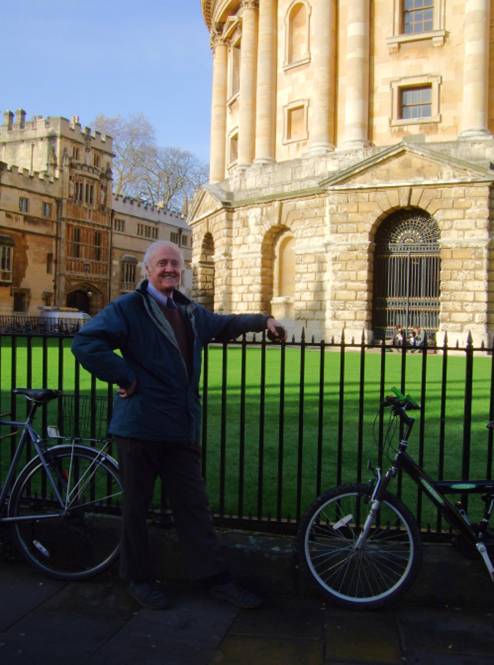
Mervyn Bedford at one of the many Oxford landmarks of higher education.
Because I know Aage Myhre and his wife and very much respect what he is trying to do for Lithuania, I offered to write of educational values for the new version of VilNews. The Baltic nations have a perfect opportunity to change the map of educational provision in ways that better fit the rapidly changing world of the 21st. century. Education is not about buildings. It is not about systems and organisations. It is not about tests and inspections. It is about people and the relationships between those who want to learn, or need to learn, and those who already know it. For almost 150 years State school systems have imposed a model of teaching and learning that has hardly changed while society has fundamentally changed and, recently, very rapidly. Those changes are racing unseen towards our youngest children.
At a conference in Norway in 2009, reported in the respected UK magazine “New Scientist,” experts discussed how soon human beings will need to be wired to the super computers rapidly arriving in the work place. Earliest suggested date was 2045. At MIT in the US by 2029 they will have computers able to replicate human thought and decision by copying the chemical and electrical patterns in the human brain. Two Oxford University teachers have argued in print about whether it is right to allow students drugs to enhance their brain performance. Drugs to provide specific hours of sleep and brain implants that help deaf children to hear and paralysed limbs to move already exist. Job requirements in a very few years time and the character of society will change dramatically. We do not have long to get a school system right.
1 An Ideal School System
The Early Brain
School systems have been rooted in teaching mainly facts which pupils and students have only to remember and write down on test papers. Testing systems of all kinds, including the university sector, are seriously flawed. Research shows that at best they test speed if handwriting and memory. These are not the most desirable qualifications for employment. Business people in England and some academics openly complain that despite escalating results at 18+ we are still not producing enough people who can think for themselves. That is why future human beings, including my four young grandchildren, may have to be electronically plugged into the machines.
Modern scanning reveals that the human brain, even before birth, is imprinted for learning. The two senses- touch and hearing- are alive and working from the first day. "Feed them now" nature is crying, but how little we do to work them effectively. A baby's early experience is a total lottery. There is abundant evidence that the brain has enormous reserve power that even the Einsteins and Hawkings do not tap. School systems threaten the human brain with redundancy.
Early encouragement of free, natural learning experience in babies is now essential. The priority for national investment must now be early education. The obvious risks can be managed effectively. We have to build raw brain power in those early years, up to three and four, when the brain is plastic enough to believe anything is possible. That is the power needed to stay ahead of the machines. What we have built by around 4 and 5 will continue to mature and learn but we cannot much increase its raw power. If we do what is right for our youngest children we shall solve all the problems most countries observe with later education, including many costly efforts to repair the dame of educational failure.
Parent-Teacher Partnership
Research clearly shows the power for young children’s learning when teachers and parents are on the same wavelength. This is best found in smaller schools. Across the UK and elsewhere standards in small schools are at the top of national performance despite all the alleged “problems” argued for closing them. No educational evidence is ever offered to support closures. They are said to be too expensive but this is a badly flawed argument. When total education spending is calculated small schools generally cost less. It is not fair only to calculate their pupil unit costs. Small schools serve mainly rural areas and bring rural community benefit, but our urban children and their communities urgently need the same benefits. The “big is better and by the way cheaper” myth has never been right. Long-term, small-scale education delivers profit on its costs. Academic achievements are more widely achieved and are more enduring. This brings better qualifications and jobs and eventually higher tax revenues for the State while the healthy partnership between home and school reduces the heavy costs of later educational failure. A wise government will invest in small-scale provision and partnership between teachers and parents.
Effective Teaching and Learning
Research has consistently shown that up to 50% of all outcomes still reflect home background- for better or worse. The other 50% is quality of teaching. This will also reflect quality of headteachers and school leadership.
There is much profoundly valid research showing basic factors which, if present in lessons, make them effective. This important professional research never reaches classrooms while the government systems shaping what schools do and what universities demand distract their interest. The desired models, however, require the opposite of what most school systems offer..….not least the way time is used. I worry about under-privileged and disadvantaged children, an often failing cadre of disaffected pupils, but I worry more for those who think they have succeeded. A wise government will invest heavily in giving teachers the tools they need to do the job. Teaching is not mysterious but it is more complex than even many professionals believe.
For example the most effective learning comes when teachers in their planning exploit what their pupils already know and can do. As a result they often ask them to make important decisions about their work and take responsibility for much of it. Real-world experience like discussion and co-operation play their part. Teaching becomes a sensitive matter of fine-tuning the whole programme, leading when required and at other times supporting the learning. Teachers must always show they are in charge and know the goals. They need to demonstrate they not only have the tools but know how and when and where to use them. Successful schools have leaders who inspire such professional insight and vision and lead the practice by their own example. Their schools are places where flexibility and spontaneity feature significantly in everyday organisation.
Effective Accountability
The observation model I developed in Sweden is similar to the one recently adopted in New Zealand to replace tests and inspections. If we inform teachers better and help them to inform each other by observing in classrooms, where the real action is, we shall change and improve practice in some cases overnight. Observation is such a revelatory practice. Its truths often have meaning for more than the teachers, but for the school and even the State. To invest in such a system needs only an independent, external validation system- checking that schools use it, and are learning from it. It will be much cheaper than tests and inspections.
If Lithuania adopted these principles and priorities it will achieve the paradigm shift in educational practice the 21st. century urgently requires. Heavy, top-down, bureaucratic and expensive procedures will be minimised. In England we are wasting billions of pounds on smart new buildings despite two major pieces of respected academic research showing that long-term the quality of school and college buildings impacts little on performance. We want clean schools, in good repair, with adequate working space, ventilation and sound-proofing. We do not need architectural palaces. No-one can tell me exactly what education will look in even ten years time, let alone 2099. It will be very much at a button and the two resources our children will still most need will be good parents and good teachers. Those are the targets for investment. Let Lithuania lead the world.
Mervyn Bedford
Mervyn Benford is a former teacher, head teacher, local authority inspector and adviser who later worked for eight years as a national school inspector in England and Wales. The school he led won recognition under the 1986 Royal Society of Arts “Education for Capability” award. He has throughout his career contributed media articles and interviews on education and more recently worked on and off in Sweden for 14 years training teachers to observe lessons and give friendly but constructive feedback as a better method of accountability than testing and inspection. He observed over 2600 lessons in Sweden across the age group from 1 to 20. He works voluntarily for an organisation designed to promote the virtues of smaller schools. He has a deep interest in the independent Baltic States and in 2009 talked at an international seminar in Riga on school quality issues. In England, as a member of the National Education Trust, he is regarded as one of its “Leading Thinkers
- Bookmark :
- Digg
- del.icio.us
- Stumbleupon
- Redit it
VilNews e-magazine is published in Vilnius, Lithuania. Editor-in-Chief: Mr. Aage Myhre. Inquires to the editors: editor@VilNews.com.
Code of Ethics: See Section 2 – about VilNews. VilNews is not responsible for content on external links/web pages.
HOW TO ADVERTISE IN VILNEWS.
All content is copyrighted © 2011. UAB ‘VilNews’.

 Click on the buttons to open and read each of VilNews' 18 sub-sections
Click on the buttons to open and read each of VilNews' 18 sub-sections 






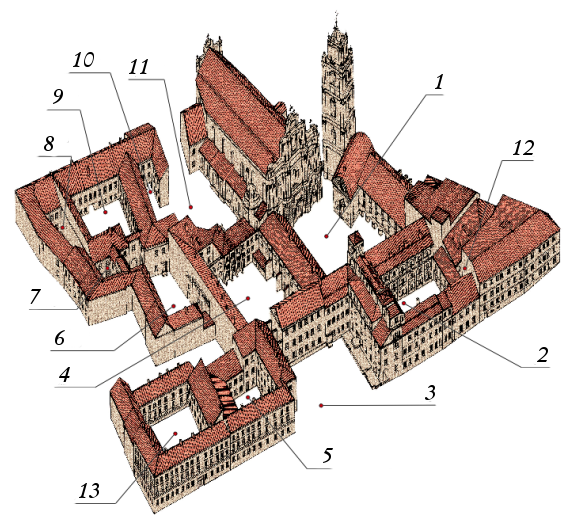




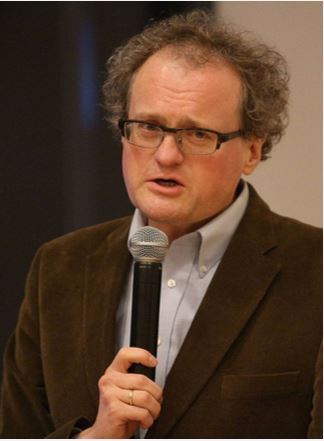
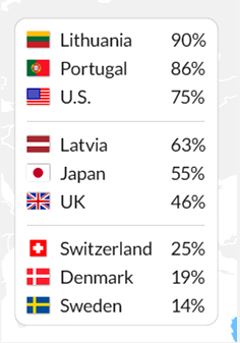
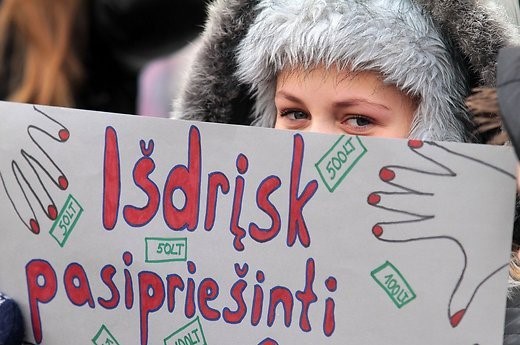


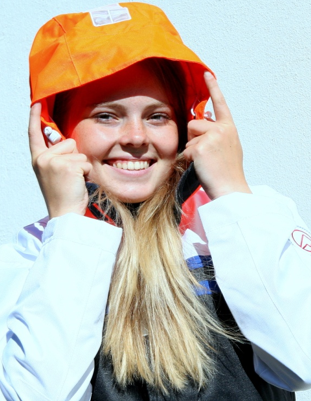
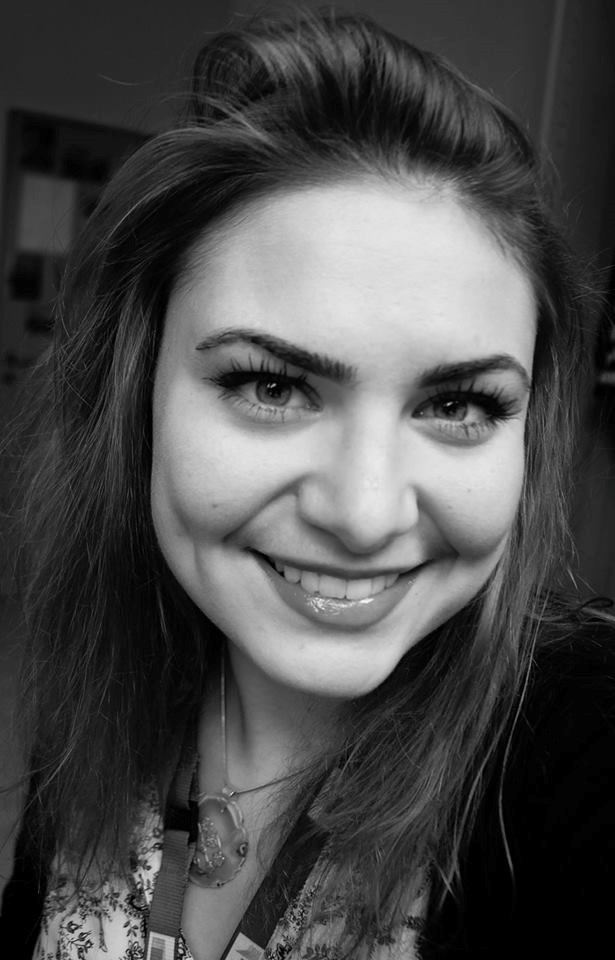
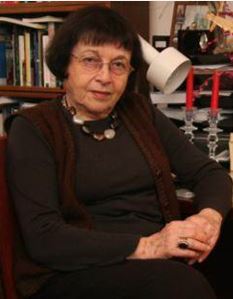
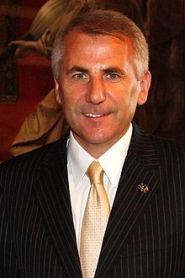
.jpg)
